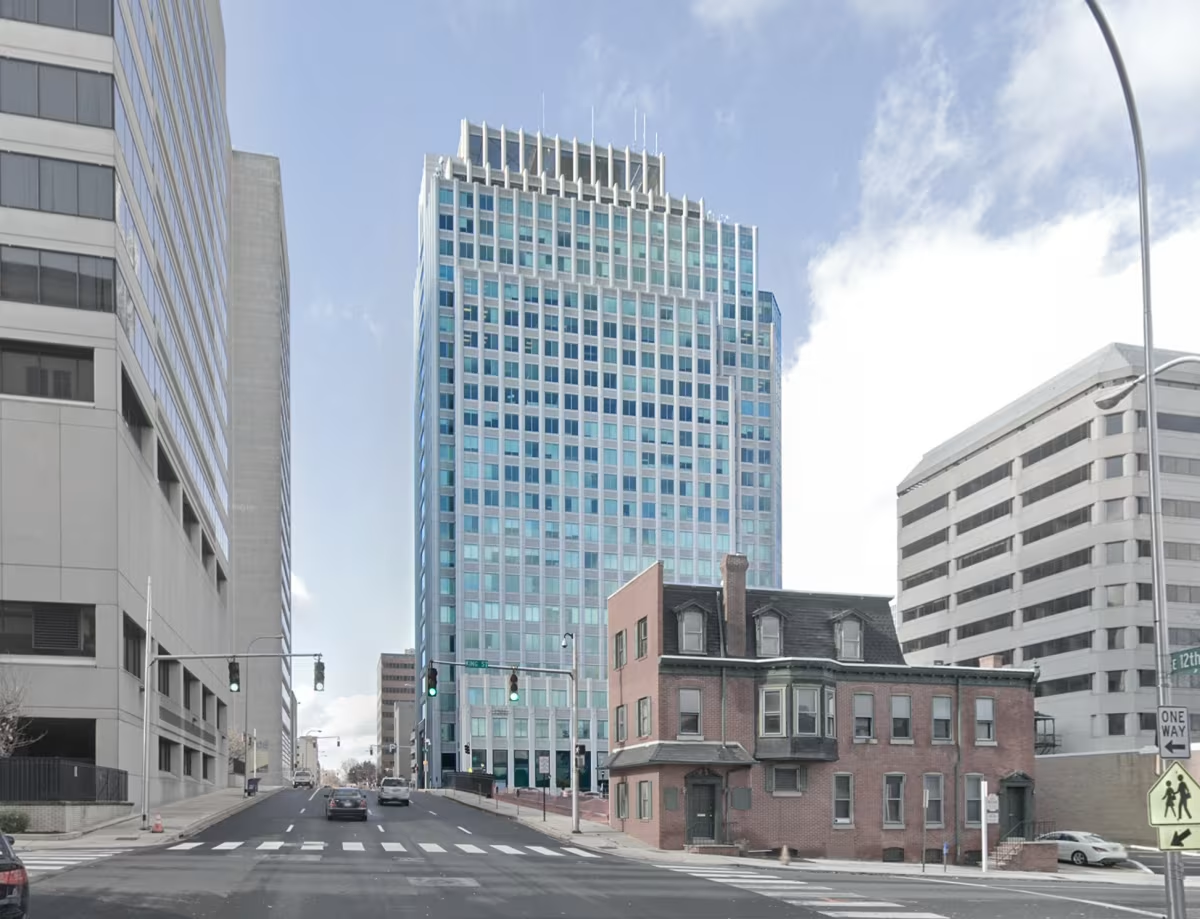1201 North Market Street Building vs Random House Tower


Comparing the 1201 North Market Street Building and the Random House Tower is compelling because they were both designed by Skidmore, Owings & Merrill, yet they stand in different cities (Wilmington, DE and New York, NY), and were completed a decade apart.
What this will allow us to see, is how the same firm's approach adapted to different places in different periods of time.
Height & Size
The Random House Tower is clearly the larger tower of the two, both in terms of height and number of floors. It rises to 682ft (208m) with 52 floors above ground, while the 1201 North Market Street Building reaches 361ft (110m) with 23 floors above ground.
Of course, each project may have faced different briefs or regulatory constraints, which we don't really know about and could also explain the outcome.
Architectural Style
The 1201 North Market Street Building was designed in the Modern style, while the Random House Tower reflects the principles of Contemporary.
The 1201 North Market Street Building represents a late expression of the Modern, a style already in decline in 1988 when it was completed. By contrast, the Random House Tower followed the then mainstream Contemporary, embodying the dominant architectural direction of its time.
Uses
The Random House Tower follows a mixed-use model, combining commercial and residential. In contrast, the 1201 North Market Street Building has remained primarily commercial.
The Random House Tower offers 101 residential units.
Both towers provide significant parking capacity, with 1201 North Market Street Building offering 475 spaces and the Random House Tower offering 150.
Structure & Facade
The two towers rely on different structural systems, reflecting distinct engineering strategies.
The 1201 North Market Street Building uses a Framed Tube In Tube structural system, which combines a strong central core with a perimeter tube of columns, while the Random House Tower uses a Frame system, that relies on a regular grid of columns and beams to sustain its weight.
Yet, when it comes to their facade, they both employed the same solution, a Curtain Wall facade.
A curtain wall is a non-load-bearing facade hung from the structural frame. It is anchored to floor slabs and transfers only its own weight and wind loads, allowing for sleek, glassy exteriors.
| 1201 North Market Street Building | Random House Tower | |
|---|---|---|
| Skidmore, Owings & Merrill | Architect | Skidmore, Owings & Merrill |
| 1988 | Year Completed | 2003 |
| Modern | Architectural Style | Contemporary |
| Commercial | Current Use | Mixed |
| 23 | Floors Above Ground | 52 |
| 4 | Floors Below Ground | 2 |
| 110 m | Height (m) | 208 m |
| 9,866 m² | Usable Area (m²) | 79,900 m² |
| Framed Tube In Tube | Structure Type | Frame |
| Steel | Vertical Structure Material | Steel And Reinforced Concrete |
| Concrete And Steel | Horizontal Structure Material | Reinforced Concrete |
| No | Facade Structural? | No |
| Glass | Main Facade Material | Glass, Steel, Aluminum |
| Turner Construction Company | Main Contractor | Plaza Construction Corporation |
| Skidmore, Owings & Merrill | Structural Engineer | Thornton Tomasetti |
| DE | State | NY |
| Wilmington | City | New York |
| 1201 North Market Street | Address | 1739 Broadway |